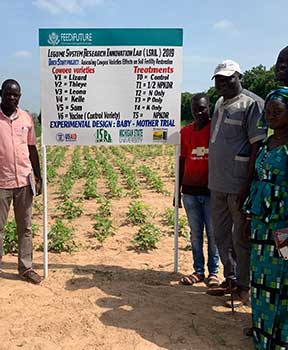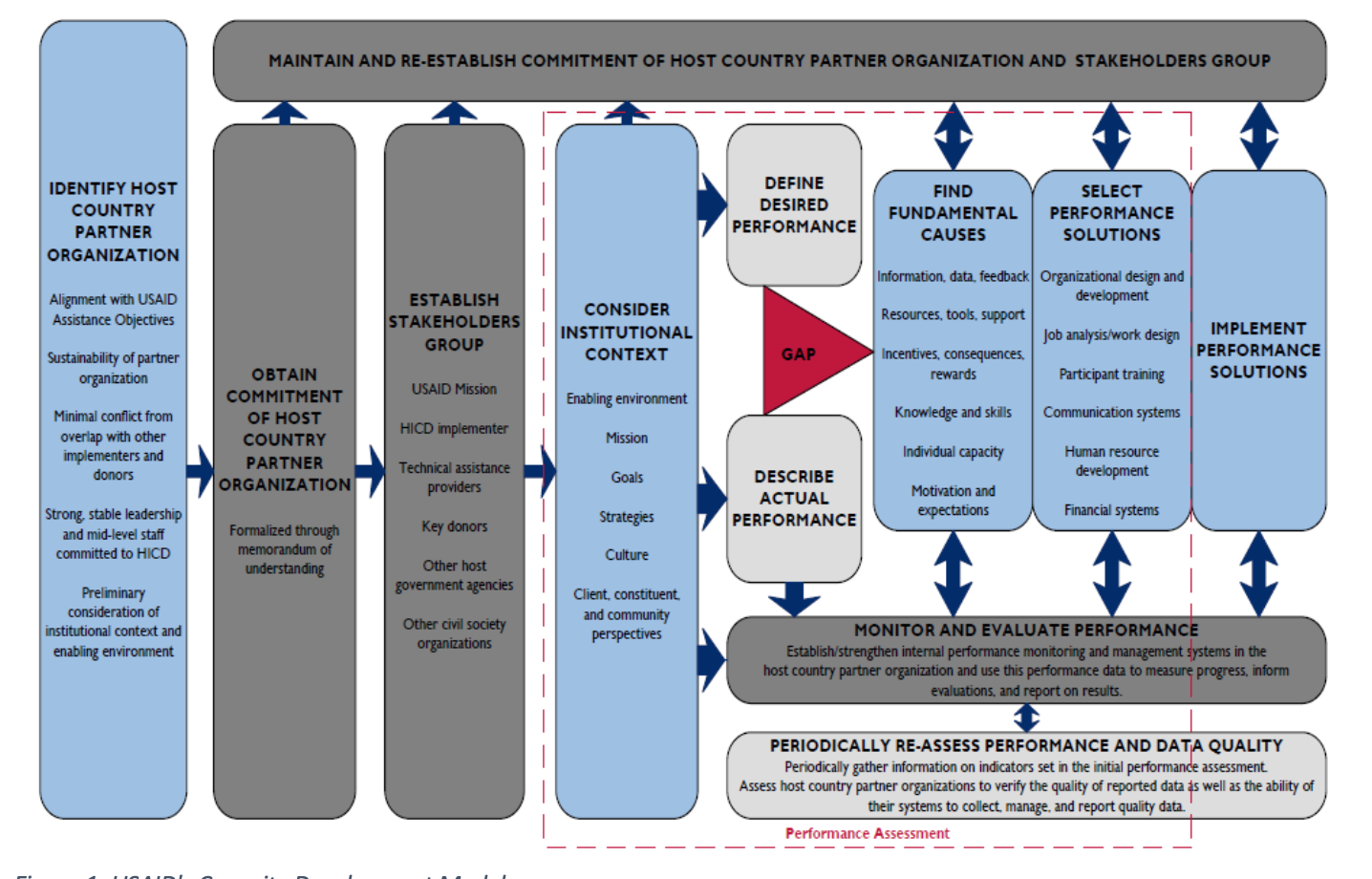HICD
Human and Institutional Capacity Development (HICD) is a USAID model of structured and integrated processes designed to identify fundamental causes of performance gaps in host country partner institutions, address those gaps through a wide array of performance solutions in the context of all human performance factors, and enable cyclical processes of continuous performance improvement through the establishment of performance monitoring systems.

The ultimate goal of HICD is to help USAID’s partners improve performance in critical areas leading to measurable results in achieving the organization’s goals and objectives. In undertaking HICD initiatives, USAID Missions will strengthen their partner organizations’ abilities to more effectively perform for their constituents and stakeholders and will increase the effectiveness of ongoing technical assistance provided by the United States Government and other International Donors.USAID HICD Handbook
This following lays the foundation for all subsequent capacity development. It provides the framework for capacity development, dividing capacity development into various component parts, as can be seen from the graphic below (Figure 1).

Basically, the phases of capacity development start with identifying and getting commitment from key institutional “partners,” forming a broader “stakeholder” group, evaluating the institutional context through a gap analysis between actual outcomes and desired outcomes, designing performance solutions for the institution, and then implementing, monitoring, and evaluating the results for continuous improvement. Within this model, among the performance solutions, will be capacity development for individuals as well. Human capacity development should always take place within an institutional context, lest skill and knowledge gains never get rooted in the institutional systems of which they are a part.
Local Systems: A Framework for Supporting Sustained Development (2014)
The local systems framework adds the system dimension to the HICD Handbook. In the evolution of ideas, it became apparent that working on institutions apart from the systems of which they are a part, makes it unlikely that capacity development gains can be sustained over time. This volume looks at the ten principles for introducing and sustaining change over time:
- Recognize there is always a system
- Engage local systems everywhere
- Capitalize on our (USAID’s) convening authority
- Tap into local knowledge
- Map local systems
- Design holistically
- Ensure accountability
- Embed flexibility
- Embrace facilitation
- Monitor and evaluate for sustainability
CLA Toolkit (2018)
Although there was reference to methods for working with host country partners in both the HICD Handbook and the Local Systems Framework A single overarching methodological approach to program implementation was missing. CLA stands for “collaborate, learn, adapt.” This online toolkit is intended to give implementers of USAID programs guidance on how to best approach the task of designing and implementing capacity development in local systems.

The toolkit includes not only an introduction to the CLA framework, but also useful tools for planning, designing, implementing, monitoring, and evaluating capacity development efforts. In addition, it provide helpful information on managing knowledge assets derived from capacity development efforts. For those who are looking for help in implementing capacity development activities, this is a very helpful page.
Quick Links
Resources on Legumes & HICD
CDAIS project - Capacity Development for Agricultural Innovation Systems
FAO Capacity Development - FAO
USAID Policy & Regulations on HICD
USAID Local Systems: A Framework for Supporting Sustained Development



